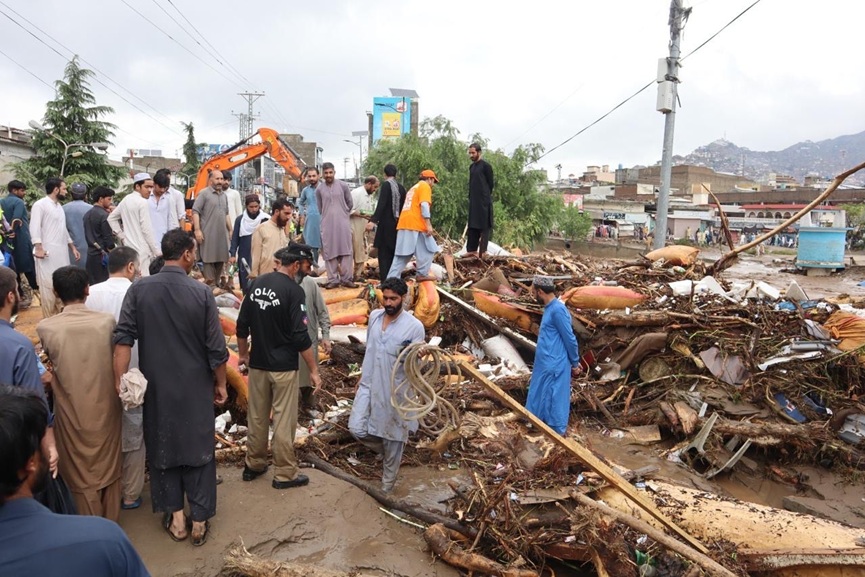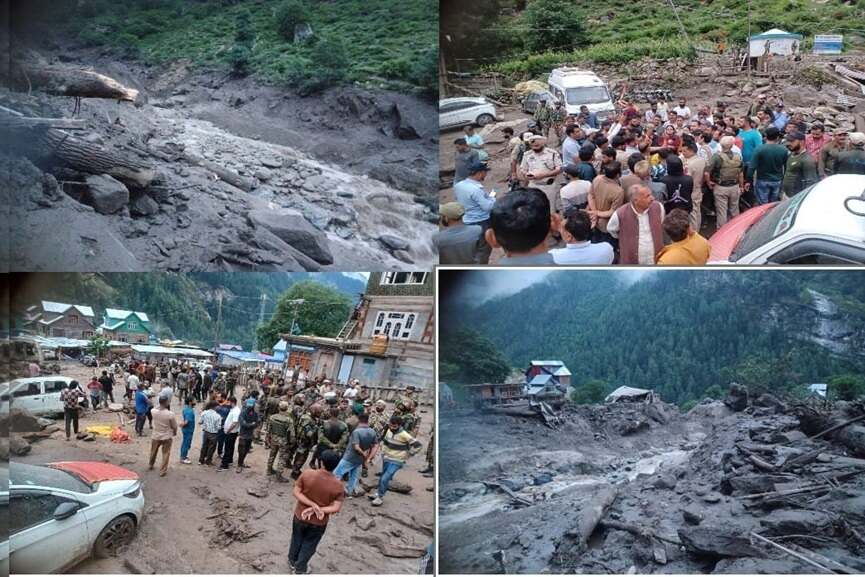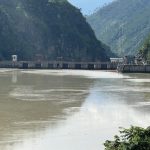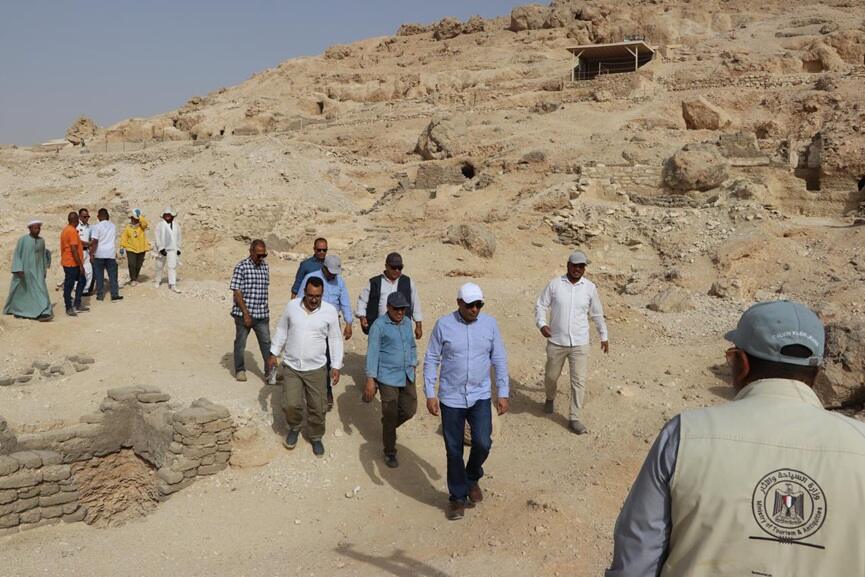Islamabad/Srinagar: Torrential monsoon rains have unleashed a wave of destruction across northern Pakistan and Indian-administered Kashmir, triggering landslides and flash floods that have killed nearly 260 people in less than a week.
According to Pakistan’s National Disaster Management Authority (NDMA), at least 194 people have died in Pakistan alone, most of them in the mountainous Khyber Pakhtunkhwa province, where 180 fatalities have been confirmed.
Another nine deaths were reported in Pakistan-administered Kashmir, while five people died in the northern Gilgit-Baltistan region. Officials said 78 victims came from the flood-hit Buner district, where local authorities have declared a state of emergency.
Amid rescue efforts, tragedy struck when a Pakistani military helicopter on a relief mission in Khyber Pakhtunkhwa crashed in bad weather, killing all five crew members. Helicopters have been crucial in reaching isolated villages where landslides and floods have cut off road access.
In Mansehra district, rescuers evacuated 1,300 stranded tourists after landslides blocked mountain passes. At least 35 people remain missing in the region, officials said. Dozens of others were injured as homes collapsed under torrential downpours in Buner and nearby districts.

Pakistan’s Meteorological Department has issued fresh warnings of heavy rainfall in the northwest, urging residents to avoid “unnecessary exposure to vulnerable areas.”
Across the border, India-administered Kashmir was hit by sudden flash floods on Thursday, killing at least 60 people and leaving around 200 missing. The worst-hit area was Chasoti village, where pilgrims preparing for a trek to a religious shrine were swept away by gushing floodwaters and mudslides. Rescue teams continued searching through boulders and debris on Friday.
This marks the second major disaster in the Himalayas in just over a week, raising alarm among scientists who warn that climate change is intensifying both the frequency and severity of extreme weather events in the region.
South Asia’s annual monsoon season, which typically lasts from June to September, delivers up to 80 percent of the region’s rainfall. While vital for agriculture and water supply, it also brings widespread flooding and landslides. The latest disasters have once again exposed the fragility of mountain communities where climate-driven extreme weather is pushing populations to the brink.


























